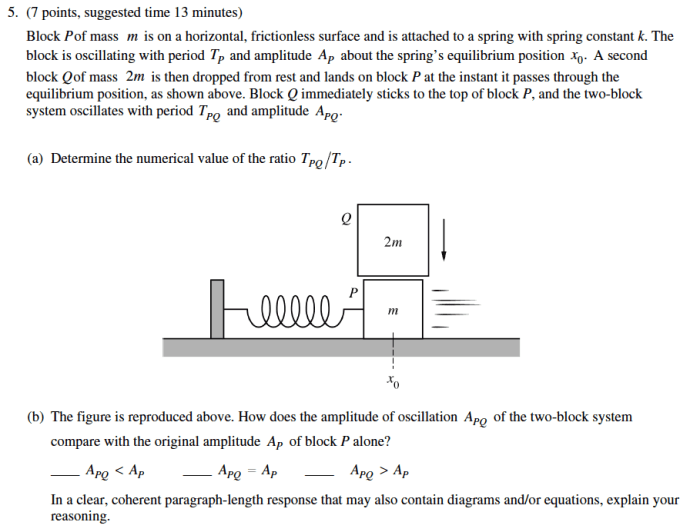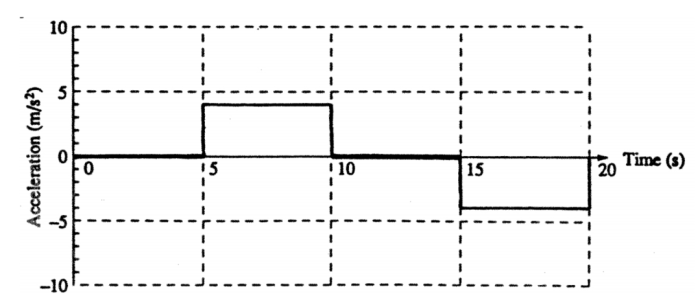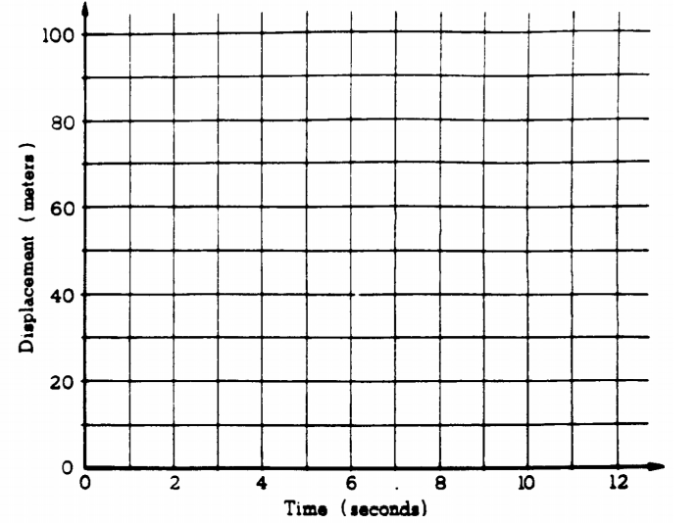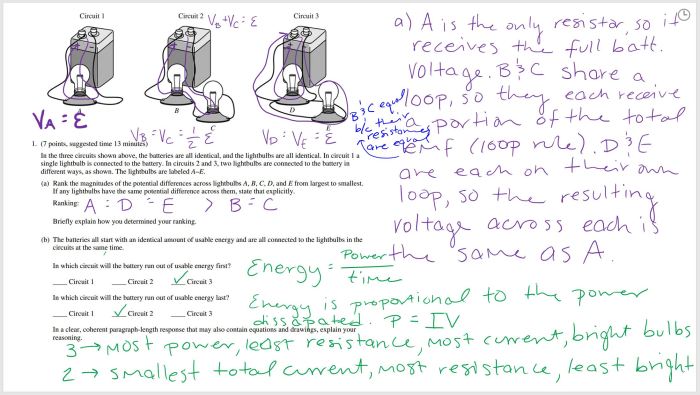Prepare to conquer the AP Physics 1 Kinematics FRQ with this comprehensive guide. Dive into the world of motion, where we’ll unravel the intricacies of kinematics, equip you with essential concepts and equations, and guide you through problem-solving strategies. Get ready to excel in this challenging yet rewarding endeavor!
In this guide, we’ll explore the different types of kinematics problems, delve into key concepts and equations, and provide effective problem-solving strategies. We’ll also highlight common errors and misconceptions to help you avoid pitfalls and master the subject.
Introduction

Kinematics is the branch of physics that describes the motion of objects without considering the forces that cause the motion. It is a fundamental part of AP Physics 1, as it provides the foundation for understanding more complex topics such as dynamics and energy.
The AP Physics 1 kinematics FRQ is a free-response question that tests students’ understanding of kinematics concepts. The question typically presents a scenario involving the motion of an object and asks students to analyze the motion using kinematics equations.
Purpose of the FRQ
The purpose of the FRQ is to assess students’ ability to:
- Identify and apply relevant kinematics equations
- Analyze and interpret motion graphs
- Solve kinematics problems involving real-world scenarios
Format of the FRQ
The FRQ is typically divided into two parts:
- Part A:A multiple-choice question that tests students’ understanding of a specific kinematics concept.
- Part B:A free-response question that requires students to apply kinematics equations to solve a problem.
Content Analysis

Kinematics is a branch of physics that describes the motion of objects without considering the forces that cause the motion. FRQs in AP Physics 1 Kinematics typically assess students’ understanding of the following concepts:
- Types of Kinematics Problems
- Key Concepts and Equations
- Problem-Solving Strategies
Types of Kinematics Problems
There are several types of kinematics problems that can appear on the FRQ, including:
- Constant velocity problems: These problems involve objects moving at a constant velocity. Students must be able to calculate the object’s displacement, velocity, and acceleration.
- Constant acceleration problems: These problems involve objects moving with a constant acceleration. Students must be able to calculate the object’s displacement, velocity, and acceleration.
- Projectile motion problems: These problems involve objects that are launched into the air. Students must be able to calculate the object’s trajectory, velocity, and acceleration.
Key Concepts and Equations
Students should be familiar with the following key concepts and equations for the FRQ:
- Displacement: The change in position of an object.
- Velocity: The rate of change of displacement.
- Acceleration: The rate of change of velocity.
- Equations of motion: These equations relate displacement, velocity, acceleration, and time.
Problem-Solving Strategies
Students can use the following general strategies to solve kinematics problems:
- Identify the type of problem.
- Draw a diagram of the situation.
- Choose the appropriate equations of motion.
- Solve the equations for the unknown variables.
Common Errors and Misconceptions

Kinematics, the study of motion, is a fundamental concept in physics. However, students often encounter errors and misconceptions when solving kinematics problems. Understanding these errors and misconceptions is crucial to improving problem-solving skills.
Ignoring Initial Conditions
A common error is neglecting initial conditions. Students may forget to consider the initial position, velocity, or time when solving problems. This leads to incorrect predictions of an object’s motion.
AP Physics 1 kinematics FRQ questions can be challenging, but practicing with resources like color by number net force can help you master the concepts. This interactive activity provides a fun and engaging way to reinforce your understanding of force and motion, preparing you for success on the exam.
Assuming Constant Velocity
Another misconception is assuming that an object always moves with constant velocity. In reality, objects can accelerate or decelerate, resulting in non-uniform motion. Neglecting acceleration or deceleration can lead to inaccurate calculations.
Misinterpreting Displacement and Distance
Students often confuse displacement and distance. Displacement is the net change in position, while distance is the total path length traveled. Failing to differentiate between these two concepts can result in incorrect answers.
Neglecting Friction and Air Resistance
In many real-world scenarios, friction and air resistance affect an object’s motion. Neglecting these factors can lead to overestimating an object’s speed or distance traveled.
Mixing Units
Mixing units is a common error that can lead to incorrect results. Students must ensure that all units used in a problem are consistent and convert units as necessary.
Guidance on Avoiding Errors and Misconceptions
- Always consider initial conditions.
- Recognize that acceleration and deceleration can affect motion.
- Distinguish between displacement and distance.
- Consider friction and air resistance in real-world problems.
- Pay attention to units and convert as needed.
Tips for Success

To excel on the kinematics FRQ, effective study habits and test-taking strategies are crucial. By implementing these tips, you can enhance your understanding of kinematics concepts and maximize your performance on the exam.
Study Habits
- Review notes regularly:Go over your class notes and textbook readings consistently to reinforce concepts. Summarize key ideas and equations to aid memorization.
- Practice problems diligently:Engage in solving numerous kinematics problems of varying difficulty levels. This helps develop problem-solving skills and strengthens your understanding of equations.
- Seek help when needed:Don’t hesitate to ask your teacher, classmates, or a tutor for assistance if you encounter difficulties. Clarifying concepts and addressing misunderstandings promptly ensures a solid foundation.
Test-Taking Strategies, Ap physics 1 kinematics frq
- Manage time wisely:Allocate time effectively for each part of the FRQ. Start with the easiest questions to build confidence and avoid spending too much time on a single problem.
- Allocate points strategically:Pay attention to the point distribution for each question. Focus on earning points for the parts you are most confident in.
- Show all work and explain reasoning:Even if you don’t arrive at the correct answer, demonstrating your thought process can earn partial credit. Clearly explain your approach and show all calculations.
Common Queries: Ap Physics 1 Kinematics Frq
What is kinematics?
Kinematics is the study of motion without considering the forces that cause it.
What types of kinematics problems can appear on the FRQ?
Common types include projectile motion, constant acceleration, and relative motion problems.
What are some key concepts and equations in kinematics?
Key concepts include displacement, velocity, and acceleration. Essential equations include the constant acceleration equations and projectile motion equations.
